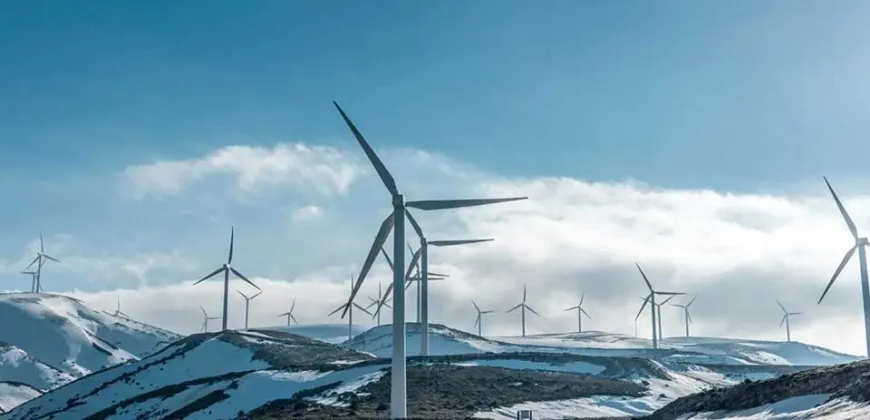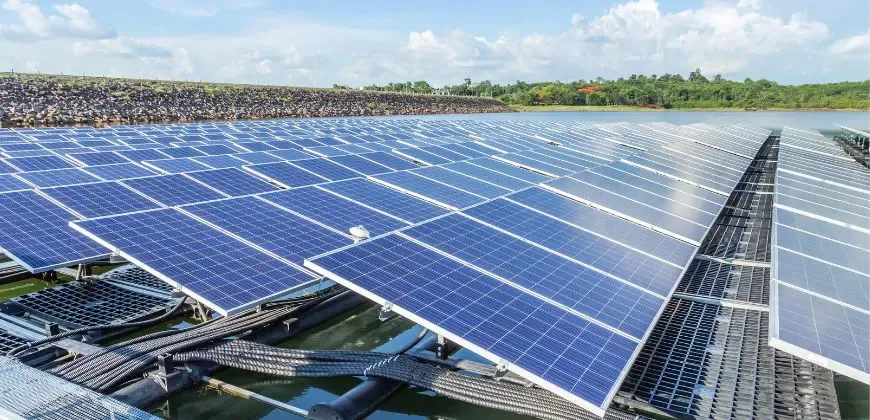Helping communities make informed energy decisions
The potential greenhouse gas emission reductions and financial implications of both supply-side and demand-side strategies for remote communities.
For her capstone project, Anna Swanson analyzed the potential greenhouse gas emission reductions and financial implications of both supply-side and demand-side strategies for remote communities, and then developed a tool that they can use to determine where to begin investing.

With a global push to significantly reduce greenhouse gas emissions, communities are under pressure to cut their current energy use and shift to renewable energy sources. Both require a substantial financial investment – but how do they compare? And which offers the most immediate benefits?
Governments of all levels are grappling with these questions, which are particularly relevant for rural and remote communities that are not connected to the electricity grid. To help decision-makers get a better understanding of the issues and trade-offs, Master of Engineering Leadership (MEL) in Clean Energy Engineering student Anna Swanson created a tool that communities can use to evaluate their energy supply options and identify the most significant actions they can make to reduce emissions. She worked on the project with Community Power, a Division of the Kambo Energy Group, a Vancouver firm that advises off-grid communities on strategies to reduce their costs of energy and move away from diesel-generated supply.
Swanson analyzed several years of energy-use data from a small BC off-grid community – the Hesquiaht First Nation on Vancouver Island – who rely on diesel to generate electricity.
“My objective was to examine the data through the lens of reducing greenhouse gas emissions for each community, and to then conduct a financial analysis to determine what it would cost to implement various solutions, including their payback period and net present value,” she says.
On the supply side, she examined the cost of shifting away from diesel to a renewable energy supply, such as hydro, wind, solar or biomass. On the demand side, she focused primarily on three major changes: replacing conventional lighting with high-efficiency light bulbs, upgrading building envelopes (such as by improving insulation or filling in cracks) and using heat pumps to generate heat instead of diesel or wood-burning and gas fireplaces.
Swanson costed out the various options, including material and labour, which can be quite significant in remote communities.
“My analysis showed that to reduce greenhouse gas emissions and costs, it makes sense to start on the demand side, or at least examine changes on the demand side in parallel with modifying the supply side. For a smaller capital investment, you can have a big impact on reducing emissions.”
One of her project deliverables was to create a decision tree that communities can use to assess the pros and cons of investments to reduce their greenhouse gas emissions.
“The decision matrix tool is organized in a flowchart,” she says. “It starts with asking if the community is connected to the electricity grid. If it is, all of the questions focus on the demand side. If they are an off-grid community, the questions cover both demand and supply, with supply-side questions focusing on energy supply and fuel costs.”
The matrix is a roadmap to guide a community’s decision-making process, helping it learn about the options available and identify where they may need to do more research.
The project required Swanson to bring together her technical knowledge of energy supply and demand options and her skills in business analysis. “Forty percent of our Master of Engineering Leadership classes focus on business, and while these courses go into far more depth than I needed to on this project, they were helpful in providing a framework for this kind of analysis.”
“The historic focus has been on the impacts of energy generation,” she says. “But the conversation needs to shift to explore ways to reduce demand, and my analysis backs this up. It was very interesting to see the extent to which energy-efficiency measures have a quick payback period and reduce overall greenhouse gas emissions. I knew the numbers would be strong, but I was surprised by just how strong they actually are.”



